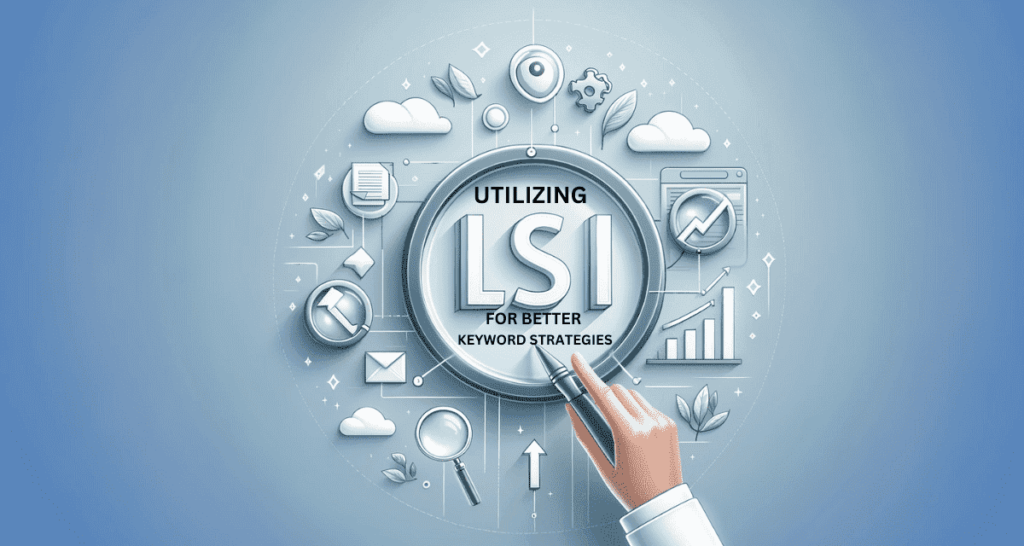Introduction
In the fast-changing world of Search Engine Optimization (SEO), staying ahead is a must. One vital concept in modern SEO is Latent Semantic Indexing (LSI). This guide aims to simplify the complexities of LSI and provide you with a step-by-step approach to make your keyword strategies more effective and improve your search engine rankings.
Section 1: Understanding LSI in SEO
Subsection 1.1: Going Beyond the Basics – The Advanced Role of LSI in SEO
LSI isn’t just another hype word in SEO; it’s a dynamic element that deeply impacts how search engines work. To fully hold its importance, let’s dig into how it works.
LSI works by looking at how words relate to each other within a context. It helps search engines understand content better. This goes beyond simply matching keywords; it helps search engines provide more relevant results to users.
Case in Point: Improving Search Rankings
The real power of LSI becomes apparent when you see how it affects search rankings. Websites that effectively use LSI keywords often find themselves ranking higher in search results. Real-life examples show that pages optimized with LSI keywords get more visibility, engagement, and ultimately, more organic traffic.
There’s a complete guide on Why LSI Keywords Truly Matter in SEO. Do check it out for deep go through on this topic.
Subsection 1.2: The Growth of LSI in Search Engines
To understand LSI fully, we need to take a step back and see how it has evolved in search engine algorithms.
A Bit of History
In the early days of search engines, rankings relied mainly on exact keyword matches. However, this approach often led to less accurate search results as it couldn’t understand the context of content. LSI was introduced to bridge this gap, completely changing how search engines understand and rank web pages.
Current Trends and What Lies Ahead
In today’s SEO landscape, LSI is still evolving. Search engines are becoming smarter, using machine learning and natural language processing to better understand content. Staying ahead means keeping an eye on emerging trends and adjusting your strategies accordingly.
Section 2: Getting Ready for LSI Keyword Research
Subsection 2.1: Tools and Resources for LSI Keyword Discovery
Before diving into LSI keyword research, you need the right tools. Let’s explore some advanced tools available and how to use them effectively.
Advanced LSI Keyword Research Tools
SEMrush: This versatile tool offers suggestions for LSI keywords, search volume data, and competitive analysis.
LSI Graph: A specialized LSI tool that provides various keyword variations based on your primary keywords.
Google’s Related Searches: Often overlooked, Google itself can be a great source for LSI keyword ideas. Look through the “related searches” listed at the bottom of the results page.
There’s a deep go through of Advanced Tools for LSI and Intent Analysis in 2024. Do check it out for further assistance.
Making the Most of Your Tools
When using these tools, it’s crucial to focus on refining your keyword list. Don’t just collect LSI keywords blindly; assess their relevance and search volume. Prioritize keywords that fit your content strategy and match what users are looking for.
Subsection 2.2: Setting Goals and Objectives
Effective SEO starts with clear goals and a deep understanding of your target audience.
Defining Clear SEO Goals
Determine what you want to achieve with LSI keyword integration. Is it better rankings, more organic traffic, or improved user engagement? Setting specific goals will guide your keyword research and content creation efforts.
Understanding Your Audience and What They Want
To make LSI work effectively, you need to understand your audience’s needs and intent. What are they searching for? What problems are they trying to solve? Modifying your content to match user intent is the key to successful SEO.
Section 3: Executing Your LSI-Based Keyword Research


Subsection 3.1: Identifying Core Keywords
Your LSI keyword strategy starts with selecting core keywords that align with your content. Let’s explore techniques to choose the right primary keywords.
Choosing Primary Keywords
Keyword Relevance: Ensure your core keywords match your content’s theme and purpose.
Search Volume Analysis: Look at search volume to understand keyword popularity.
Competitive Analysis: Check out what keywords your competitors are targeting.
Expanding Core Keywords with LSI Variations
Once you’ve identified your core keywords, LSI tools can help you find related keywords and phrases that enhance your content. This step broadens your keyword selection and improves content relevance.
Subsection 3.2: Expanding Your Keyword Lists with LSI Variations
Creating LSI keyword variations requires a systematic approach. Let’s examine each stage in detail.
Step-by-Step Guide
Start with LSI Tools: Input your core keywords into LSI tools to generate a list of related terms.
Assess Relevance: Not all generated keywords will be relevant. Filter out the ones that don’t align with your content.
Check Search Volume: Use tools like Google Keyword Planner to determine search volume and prioritize high-traffic LSI keywords.
Section 4: Integrating LSI Keywords into Your Content
Subsection 4.1: Creating Content with LSI Keywords
Having a list of LSI keywords isn’t enough; you need to seamlessly incorporate them into your content.
Strategies for Natural Integration
Contextual Relevance: Add LSI keywords where they naturally fit within your content.
Synonyms and Variations: Use synonyms and variations of LSI keywords to avoid repetition.
User Experience: Prioritize readability and user experience over stuffing keywords.
Balancing Keyword Use and Content Quality
While LSI keywords are essential, using them excessively can hurt your content’s quality and readability. Strike a balance by ensuring that your content flows naturally and provides value to readers.
We Also have a broad overview on Using SEO and LSI Keywords In Your Content. We think that might help you more for better understanding.
Subsection 4.2: LSI and Content Structure
Structuring your content with LSI in mind can further optimize its search engine visibility.
Optimal Content Structure
Headings and Subheadings: Include LSI keywords in headings and subheadings to provide context and improve SEO.
Meta Tags: Use LSI keywords in meta titles and descriptions to enhance click-through rates.
Section 5: Monitoring and Adjusting Your LSI Strategy


Subsection 5.1: Tracking LSI Keyword Performance
Your LSI journey doesn’t end with content creation; monitoring is vital for success.
Tools for Tracking
Google Analytics: Keep an eye on traffic, engagement, and conversions related to your LSI-optimized content.
Rank Tracking Tools: Monitor how your LSI keywords are performing in search rankings.
Analyzing Data
Identify trends and opportunities for improvement by regularly analyzing data. Pay attention to which LSI keywords drive the most traffic and conversions, and adjust your strategy accordingly.
Subsection 5.2: Refining Your LSI Approach
Adaptability is key in the ever-changing world of SEO. Here’s how to refine your LSI strategy based on performance data.
Re flash and Updates
Continuously update your LSI keyword lists based on performance data and emerging trends. Stay flexible and adjust your content strategy as needed.
Case Studies of Success
To inspire your efforts, we present real-world case studies showcasing the positive impact of adjusting LSI strategies. Learn from these examples to refine your approach.
Conclusion
In conclusion, LSI is a powerful tool that can significantly enhance your SEO efforts when used correctly. By understanding its depth, preparing thoroughly, executing a well-planned strategy, and continually monitoring and adapting, you can connect to the power of LSI to boost your search engine rankings and deliver valuable content to your audience.
Remember, SEO is a constantly evolving field. Embrace the journey of continuous learning and adaptation, and you’ll stay at the forefront of the digital landscape.
Additional Resources
For further exploration of LSI and advanced SEO strategies, consider these recommended readings, tools, and forums:
Readings:
Search Engine Journal’s LSI Resources
Tools:
Forums:
Explore these resources to expand your knowledge and master the art of LSI-driven SEO.
- Leveraging the Lastmod Tag in WordPress 6.5 for Superior SEO - May 23, 2024
- The Essential Role of Human Intervention in AI Content Creation - April 2, 2024
- Criteria for Google’s Spamming List: Avoiding the Pitfalls - April 1, 2024

